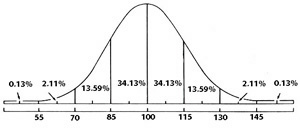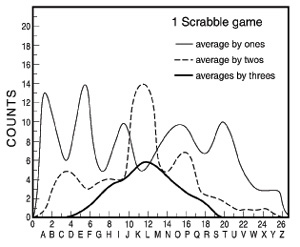 |
|
Does
the variation in 3He/4He
prove that MORB and OIB come from different
reservoirs? |
|
|
| |
The standard model
It is commonly assumed that 3He/4He
in mantle-derived materials represents two
distinct populations corresponding to two
distinct reservoirs. These are the source
of mid-ocean ridge basalt (MORB) and that
of ocean island basalt (OIB). The former is
postulated to be the upper mantle, and the
latter the lower mantle [Allègre,
1987; Allegre et al., 1995].
|

The existence of a few extreme
values does not necessarily indicate the presence
of more than one distinct population |
|
It is generally believed that the noble gases are
the only reliable geochemical indicator of lower mantle
involvement in surface volcanism. All other indicators
have been traced to the recycling of subducted crust.
High 3He/4He is assumed to result
from a high abundance of 3He, and this
has been used to argue that the lower mantle is undegassed
in primordial volatiles. Plumes are thought to carry
the high 3He/4He signal from
the deep mantle to the surface. However, the assumptions
underlying this model require that the deep mantle
has a high absolute abundance of He [Kellogg &
Wasserburg, 1990]. In this model, the observed
low abundance of He in OIB is a paradox.
The MORB reservoir is thought to be homogeneous because
some isotopic ratios show less scatter in MORB than
in OIB. The common explanation is that MORB are derived
from a well-stirred, convecting part of the mantle
while OIB are derived from a different, deeper reservoir.
Alternatively, the homogeneity of MORB can be explained
as a consequence of the sampling process, as explained
below [Anderson,
2000a; Anderson,
2000b].
|
An alternative model
Ridges process large volumes of the mantle and involve
large degrees of melting. A consequence of the Central
Limit Theorem is that the variance of samples drawn
from a heterogeneous population (reservoir) depends
inversely on the sampled volume [Anderson,
2000b; Meibom & Anderson, 2003]. The
homogeneity of a sample population (e.g., all MORB
samples) can thus simply reflect the integration effect
of large volume sampling. The presumed homogeneity
of MORB source may thus be an illusion.
The standard, two-reservoir model is reinforced by
questionable data filtering practices. Samples that
are judged to be contaminated by plumes (i.e., OIB-like
samples) are often removed from the dataset prior
to statistical analysis. Sometimes the definition
of plume influence is arbitrary. For example, isotopic
ratios which exceed an arbitrary cutoff may be eliminated
from the dataset. In this way, the MORB dataset is
forced to appear more homogeneous than it really is.
This method is commonly applied to 3He/4He.
Despite this, various ridges still have different
means and variances, and these have been shown to
depend on spreading rate and ridge maturity. The variance
for many ridge segments increases as spreading rate
decreases and, by analogy, the observed high variance
of various OIB datasets is thus consistent with slow
spreading, small sampled volume, or low degrees of
melting or degassing. |
Data
There are several recent compilations
of 3He/4He for MORB and OIB [Anderson,
2000a; Anderson, 2000b; Graham, 2000].
Some datasets are filtered to remove samples thought
to influenced by plumes, and consequently the results
vary. Nevertheless, OIB datasets show greater diversity,
and exhibit values both higher and lower, than MORB
datasets [Farley & Neroda, 1998].
Geochemical variations in a well-sampled
system such as a mid-ocean ridge or an oceanic island
can be characterized by an average value, or mean, and
a measure of dispersion such as the standard deviation
or variance. When dealing with isotopic ratios the appropriate
measures of central tendency are the median and the
geometric mean, since these are invariant to inversion
of the ratio. Likewise, when dealing with ratios, the
absolute concentrations must be taken into account,
in addition to the ratios. That is, the ratios must
be weighted appropriately before being combined [Anderson,
2000a]. |
The Central
Limit Theorem and the Law of Large Numbers [Anderson,
2000b; Botz et al., 1999] state that
variably sized samples from a heterogeneous
population will yield the same mean but will
have variances that decrease as n (the
number of samples) or V (the volume,
of the sampled region) increases. If OIB are
small volume samples and MORB are large volume
samples from the same reservoir then the variance
of OIB will be greater than the variance of
MORB. Small samples are thus more likely to
have extreme values than samples that blend
components from a large volume. |

Large-scale averaging yields
data with lower variances than small-scale sampling |
|
The scale of heterogeneity
Chemical heterogeneity probably exists
at all scales, from the grain scale to the hemisphere
scale. Some individual oceanic islands have data variances
that are smaller than that of the global spreading ridge
system, suggesting that an important scale length in
the mantle is tens to hundreds of kilometers. Individual
volcanoes at any point in time may not have access to
the total suite of heterogeneities. Some scales are
large enough that diffusive homogenization does not
occur. When taken all together the global OIB dataset
defines a distribution that is statistically the same
as the MORB dataset. 3He/4He data
for individual islands and groups of islands thus support
the conclusions reached here. |
Conclusion
The statistics of many OIB isotope
datasets are identical or similar to those of MORB datasets.
Thus, on statistical grounds, the hypothesis that OIB
and MORB are drawn from the same population cannot be
rejected. The differences in variances of the datasets
are consistent with mid-ocean ridges sampling larger
volumes than most oceanic islands. This is an extension
of the idea that fast spreading ridges sample larger
volumes of the mantle than slow spreading ridges and
therefore have smaller variances of various geochemical
parameters [Allegre et al., 1995]. The ongoing
debate about whole-mantle vs. layered-mantle convection
and deep slab penetration may have nothing to do with
the chemical inhomogeneity of the mantle as sampled
by basalts and xenoliths. |
-
Allègre, C.J., Isotope
geodynamics, Earth planet Sci Lett, 86,
175-203, 1987.
-
Allegre, C.j., M. Moreira, and
T. Staudacher, 3He/4He dispersion
and mantle convection, Geophys. Res. Lett.,
2325-2328, 1995.
-
-
-
Botz, R., G. Winckler, R. Bayer,
M. Schmitt, M. Schmidt, D. Garbe-Schonberg, P. Stoffers,
and J.K. Kristjansson, Origin of trace gases in
submarine hydrothermal vents of the Kolbeinsey Ridge,
north Iceland, Earth planet. Sci. Lett.,
171, 83-93, 1999.
-
Farley, K.A., and E. Neroda,
Noble gases in the Earth's mantle, Ann. Rev.
Earth Planet. Sci., 26, 189-218,
1998.
-
Graham, D.W., personal communication,
2000.
-
Kellogg, L.H., and G.J. Wasserburg,
The role of plumes in mantle helium fluxes, Earth
planet. Sci. Lett., 99, 276-289,
1990.
-
Meibom, A., and D.L. Anderson,
The central limit theorem, Earth planet. Sci.
Lett., in press, 2003.
|
|
|
